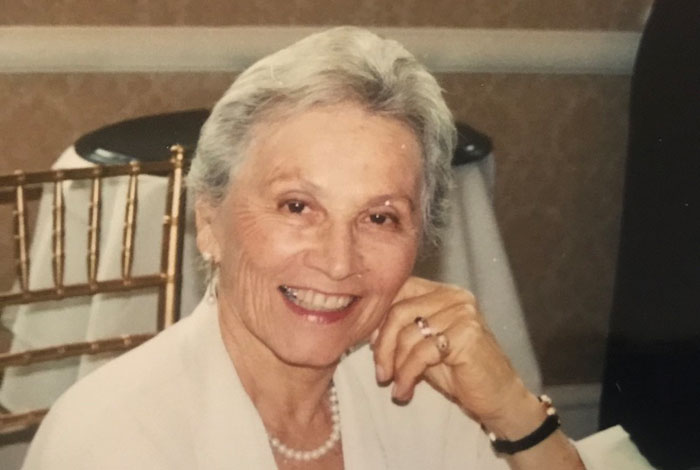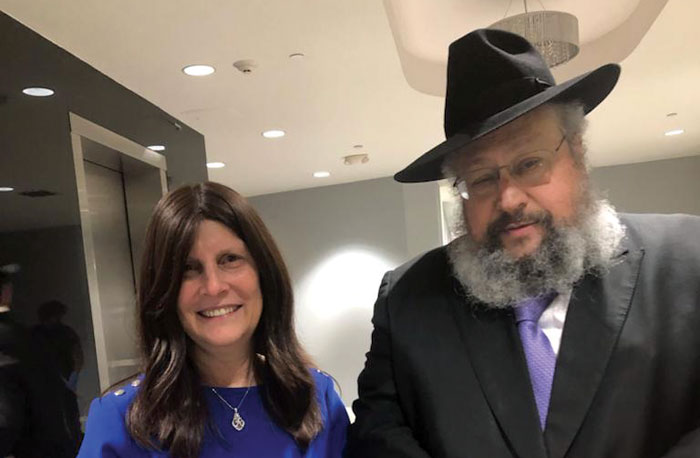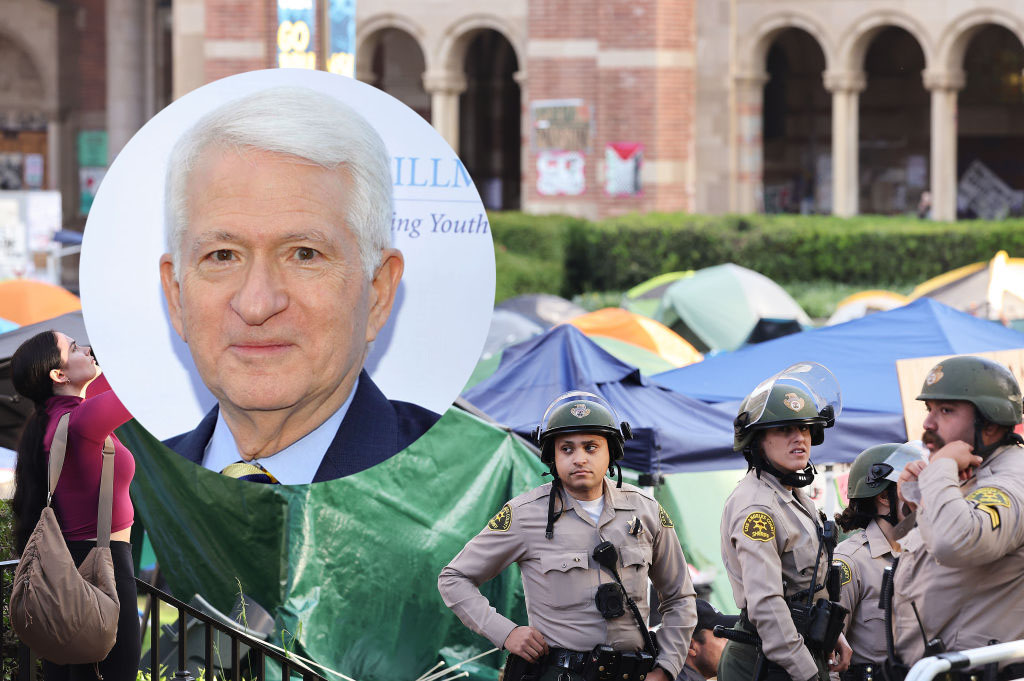“This conversation doesn’t exist,” U.S. Rep. Jane Harman allegedly told the person on the other end of the line. Now she wants everyone to know exactly what, if anything, was said.
The Venice-based Jewish Democrat, in the fight for her political life after allegations surfaced this week that in 2005 she agreed to intervene on behalf of two former AIPAC staffers charged with relaying classified leaks, called a chorus of bluffs on Tuesday when she sent a letter to the U.S. attorney general asking for the release of any tapes of classified conversations.
“I used the word ‘outrage’ twice in my letter, which I wrote this morning standing in my kitchen drinking cappuccino,” she said in a phone interview. “Three anonymous sources, former national security officials, are selectively leaking portions of an alleged intercept about which I knew nothing.”
The allegations are not new — allegations that Harman agreed to help out the AIPAC officials in mid-to-late 2005 first surfaced just prior to the 2006 midterm elections, reportedly leaked by Republicans on the U.S. House of Representatives Intelligence Committee, where Harman served as the ranking Democrat.
Which leaves the question, why now?
Congressional Quarterly, which first broke the story this week, reports profound anger in the intelligence community at Harman for getting away with what they believe to be a major crime: conspiring to wield her influence in exchange for preserving political power.
Others have noted as possible factors the deep-seated antagonism between Harman and Republicans on the intelligence committee and between Harman and Porter Goss, the former CIA director who ordered the investigation opened against her.
And then there is the imminence of the trial of the two former AIPAC staffers, due to start on June 2, and substantial weaknesses in a case in which the intelligence community is heavily invested.
Although the story is well known, several new wrinkles have emerged. Harman says she was aware of the allegations against her, but never realized she had been recorded.
The CQ story quotes national security officials as saying that Harman’s statements — one in particular at the end of the conversation, when she allegedly said, “This conversation doesn’t exist” before hanging up — were enough to establish a criminal case.
According to the security sources cited by CQ and The New York Times, the case against Harman hinged on an alleged quid pro quo: She would intervene on behalf of Steve Rosen, the American Israel Public Affairs Committee’s former foreign policy chief, and Keith Weissman, its former Iran analyst; in exchange, Haim Saban, the Israeli American kids entertainment magnate and a major contributor to AIPAC and to the Democratic Party, would support her bid to become Intelligence Committee chair.
Saban reportedly, in a conversation with U.S. Speaker of the House Nancy Pelosi (D-Calif.), then the House minority leader, threatened to pull funding for Democrats unless Harman got the top job on the committee. It’s a report not inconsistent with his subsequent behavior; a year ago, he was one of 20 backers of Hillary Rodham Clinton to make a similar veiled threat to Pelosi: Endorse Obama during the primaries, and prepare to lose our backing for your congressional races.
Another new allegation is that Alberto Gonzales, then the attorney general, shut down the case as soon as it was open, believing that Harman would be useful in keeping The New York Times from revealing the Bush administration’s expansion of its eavesdropping powers to American shores. Records show that Harman indeed backed such suppression subsequent to the recorded conversation — but that she had done so long before federal authorities opened a case against her.
Harman’s letter Tuesday asked Eric Holder, the U.S. attorney general, to release the tapes to undercut the theory of a quid pro quo.
“This abuse of power is outrageous, and I call on your Department to release all transcripts and other investigative material involving me in an unredacted form,” she said. “It is my intention to make this material available to the public.”
Harman said she could not recall what she would have considered a routine conversation from four years ago.
“Let’s just wait rather than speculate what I might have read and said, and we can parse it together,” she said.
She said she never made representations on behalf of Rosen and Weissman and suggested that whatever conversation occurred was a routine one, especially considering her acknowledged closeness to AIPAC.
“I’m proud of my friendships with members of AIPAC; I have conversations with them,” she said.
Referring to her alleged instruction that the conversation did not exist, she said: “Let’s see if I said that, let’s see the context in which I said it, what I might have been discussing with people I knew well, with an advocacy group or constituency group — we still don’t know who was at the other end.”
Harman had learned in 2005 that Pelosi, then the minority leader, planned to remove Harman from the committee; Harman enjoyed the work and wanted to stay on in her role as senior Democrat. It was a fight that would intensify in 2006, as it became clear that Democrats would retake the House and Harman had a shot at the chair.
The original leak about the alleged conversation came in October 2006, just after Harman had released a report accusing the committee’s Republican staffers of looking the other way while Randy “Duke” Cunningham (R-Calif.), who had just been convicted in a bribery scandal, funneled tens of millions in contracts through the committee to his co-conspirators.
The Republicans were about to lose leadership of the House, which they had controlled for 12 years, and the election was already nasty; the stage was set for a leak that would harm Harman and — perhaps not coincidentally — warm the cockles of Goss, who had hired many of the committee’s GOP staffers implicated in Harman’s report and who was close to another figure convicted in the scandal — Kyle “Dusty” Foggo, his No. 3 at the CIA.
Finally, there is the issue of the timing: Rosen and Weissman are on track for trial on June 2, a date their lawyers say seems “real” after close to a dozen delays. Their case is strong: In recent months The 4th Circuit Court of Appeals upheld tough constitutional restrictions on the government imposed by T.S. Ellis III, the trial judge; and Ellis overruled a prosecution effort to ban the testimony of Bill Leonard, who ran classification procedures for the Bush administration from 2002-2007 and who says the government’s case is an overreach. Reintroducing Harman into the mix may help shape opinions in the potential jury pool in northern Virginia, a region known for its preponderance of security hawks. Additionally, targeting a prominent Democrat sends a subtle message to an Obama administration that is considering prosecutions against intelligence officials for Bush-era alleged crimes, including torture and domestic spying.
Jeff Stein, who wrote the CQ story, denies that his sources entertained such considerations.
“The fact is, there is no ‘timing’ to any ‘leak,’” he said in an online chat. “No sources ‘came forward,’ so to speak. I learned about this quite a while ago and was just recently able to turn my full attention to it. Total coincidence.”
Harman says she’s “moved on” and is content with her spot on the Homeland Security Committee, chairing its intelligence subcommittee.
She equivocated about whether she would make her scheduled appearance at the AIPAC policy conference next month. “I’m scheduled to go, my schedule changes from time to time, I haven’t changed any of my plans,” she said.






















 More news and opinions than at a Shabbat dinner, right in your inbox.
More news and opinions than at a Shabbat dinner, right in your inbox.